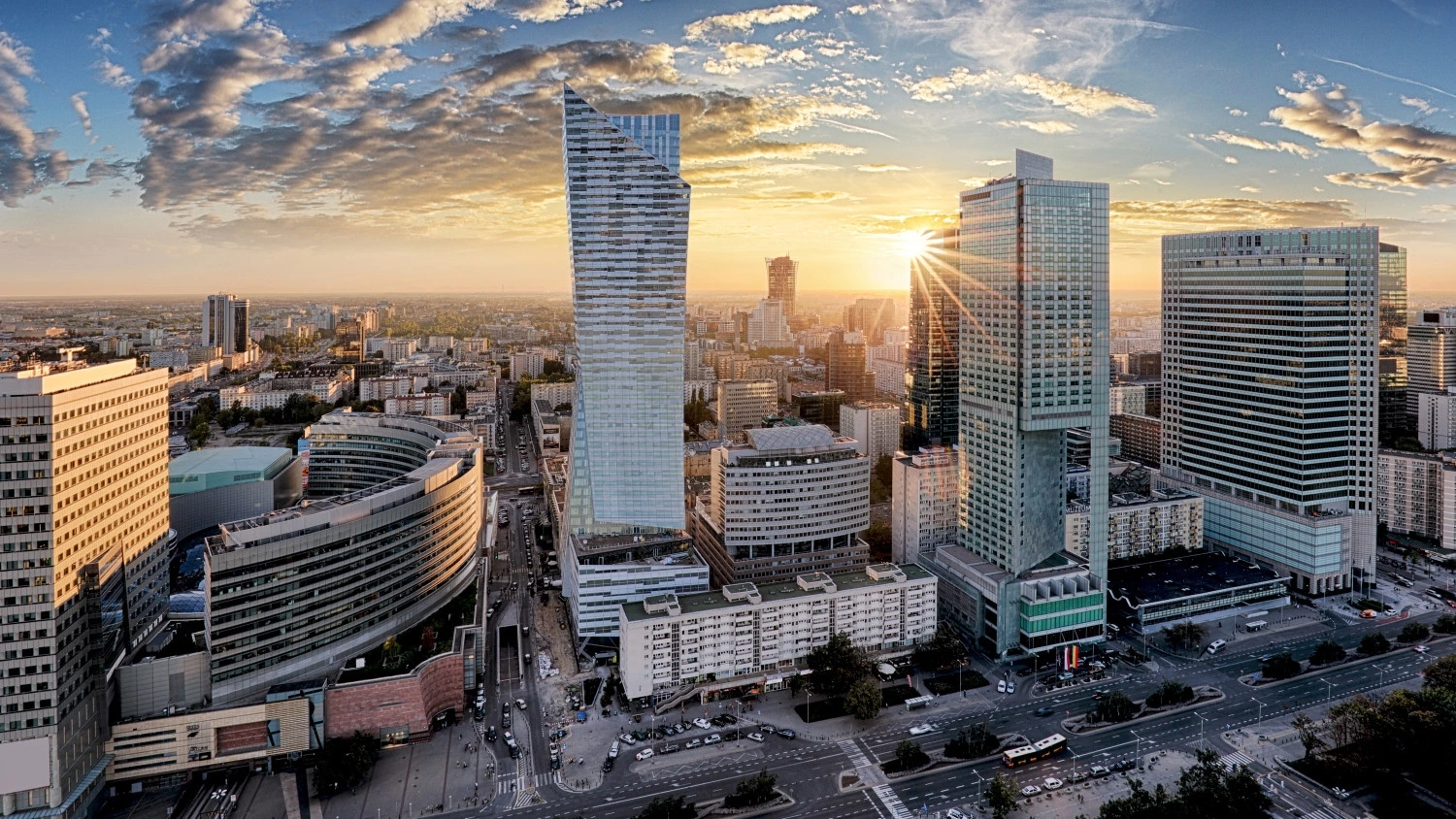
According to full-year economic outlooks, the Polish economy will contract by 3-3.5% in 2020 compared to the previous year. Nevertheless, Poland’s GDP is expected to return to growth in 2021 and expand by approximately 4% in 2020, reveals the latest report from global real estate services firm Cushman & Wakefield.
At the end of Q3 2020, the total office stock of Poland’s nine largest markets (Warsaw, Krakow, Wrocław, Tricity, Katowice, Poznań, Łódź, Lublin, and Szczecin) reached close to 11.5 million sqm, up by 7% year-on-year.
Supply
New supply amounted to 543,400 sqm in the first three quarters of 2020. Of that total, 238,300 sqm was delivered in Warsaw and the remaining 305,100 sqm in regional cities. The largest office completions in Warsaw included buildings B and C of Ghelamco’s Warsaw Hub (with 43,400 sqm and 45,600 sqm, respectively), and Varso II (39,900 sqm, HB Reavis). The largest projects completed in regional cities included Olivia Prime B in Gdansk (25,000 sqm, Olivia Business Center), the first phase of Centrum Południe in Wrocław (23,700 sqm, Skanska), Wave A in Gdansk (23,600 sqm, Skanska), High 5ive IV in Krakow (23,500 sqm, Skanska), and the first building of Face2Face in Katowice (19,600 sqm, Echo Investment).
At the end of September 2020, the development pipeline comprised 89 projects totalling 1.4 million sqm, most of which was under construction in Warsaw (22 projects), Krakow (15), Tricity (14), Katowice (13), and Łódź (12).
“Most projects are currently running to schedule. A supply gap is, however, on the cards for 2022-2023 on many markets as plans to commence new projects have been mothballed until the economic situation in Poland and the world stabilizes,” says Jan Szulborski, Senior Consultant, Cushman& Wakefield.
Take-up
Office take-up hit a total of 906,800 sqm in the first three quarters of 2020, down by 25% on the same period in 2019.
“A substantial majority of transactions closed in the year-to-date commenced in the pre-pandemic environment. In addition, due to the current situation, demand structure changed compared to the same period in 2019, with new leases accounting for a smaller share of take-up and regearing strongly on the rise,” says Vitalii Arkhypenko, Junior Consultant, Cushman& Wakefield.
The largest transactions of 2020 include PZU’s pre-let of 46,500 sqm in Generation Park Y in Warsaw, and in regional cities – the renegotiation of ABB’s 20,000 sqm lease in Krakow’s Axis.
Vacancies
The deteriorating health of the economy pushed the overall vacancy rate up by 1.7 pp quarter-on-quarter and by 2.1 pp year-on-year to 10.7% at the end of Q3 2020. The vacancy rate stood at 9.6% in Warsaw and at 11.9% in regional cities.
Due to the economic uncertainty caused by the outbreak of the Covid-19 pandemic, the Polish market witnessed an increase in sublease listings. Cushman & Wakefield estimates that at the end of Q3 2020 there was close to 190,000 sqm of office space offered for subletting, which volume is not included in the statistics for available office space.
Rents
As leasing activity weakened, prime headline rents edged down in Warsaw by €0.25/sqm/month, standing at €23.75/sqm/month in the Centre and at €14.75/sqm/month in non-central locations. This correction to rental rates was caused by an increase in sublease listings and the growing pressure on developers to provide lease incentives. Prime headline rents remained unchanged in regional cities.
Outlook
Although Poland saw economic growth of 2% in Q1 2020, its GDP shrank by 8.9% in Q2 2020 compared to the same period in 2019 due to the national lockdown caused by the outbreak of the Covid-19 pandemic. The economy bounced back in Q3 2020 following the lifting of most restrictions, but GDP did not return to the pre-pandemic level and - according to preliminary estimates - it contracted by 1.9% year-on-year.
“The second wave of the pandemic and the reintroduction of restrictions will hamper the economic recovery in the three months to December 2020 and lead to an approximately 4% fall in GDP compared to Q4 2019. Looking ahead, further corrections to commercial conditions are likely in the coming quarters if the downward trend in demand for office space continues and the economy remains stuck in low gear,” adds Jan Szulborski.



